How to compile your manuscript in Scrivener for Mac
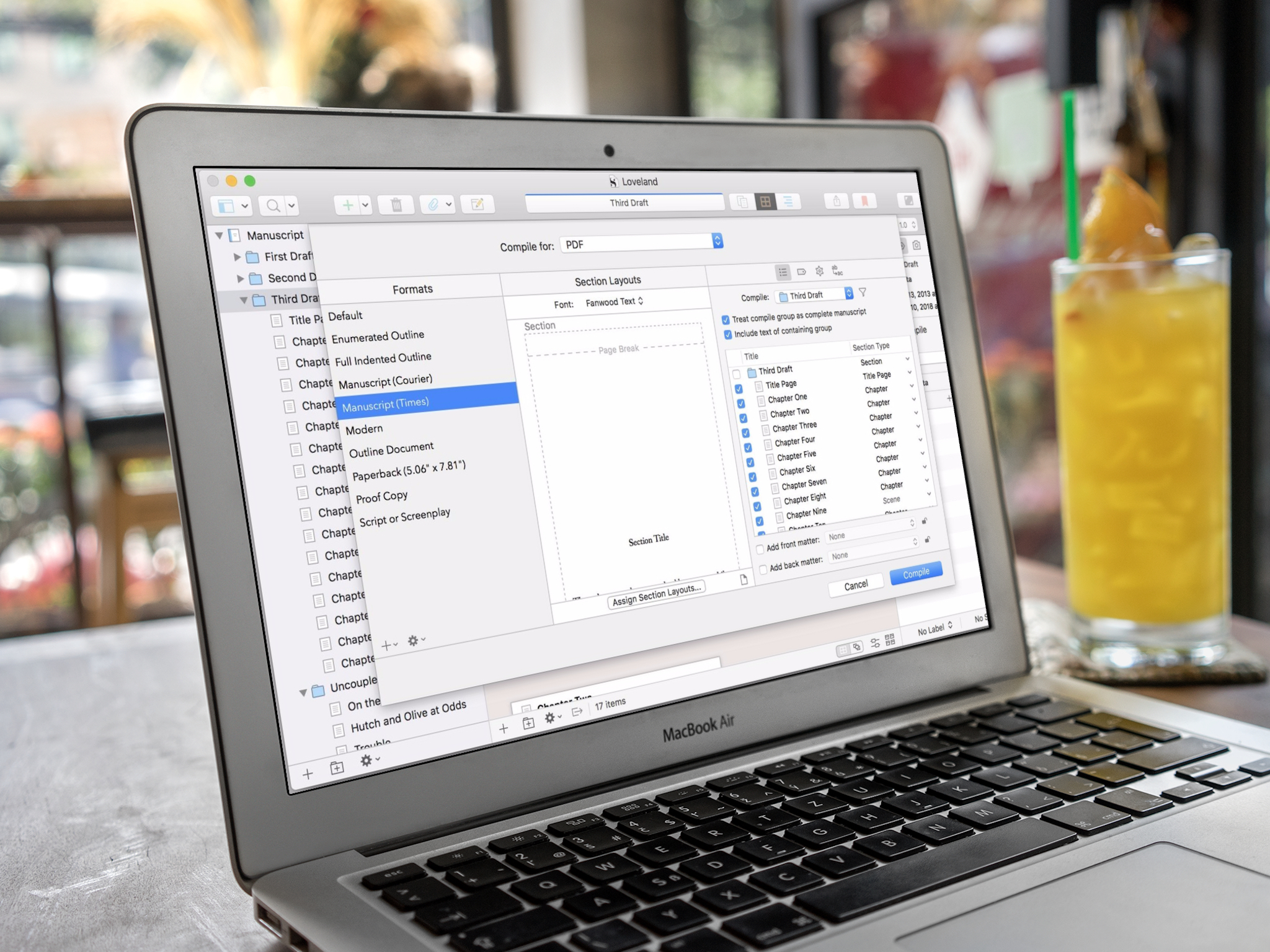
You've counted words, checked spelling and grammar, and eradicated typos. Congratulations! There's just one more hurdle to clear: the Compile box. Follow these steps to produce a finished product with minimal grumbling and/or cursing.
Step 1: Finesse your formatting
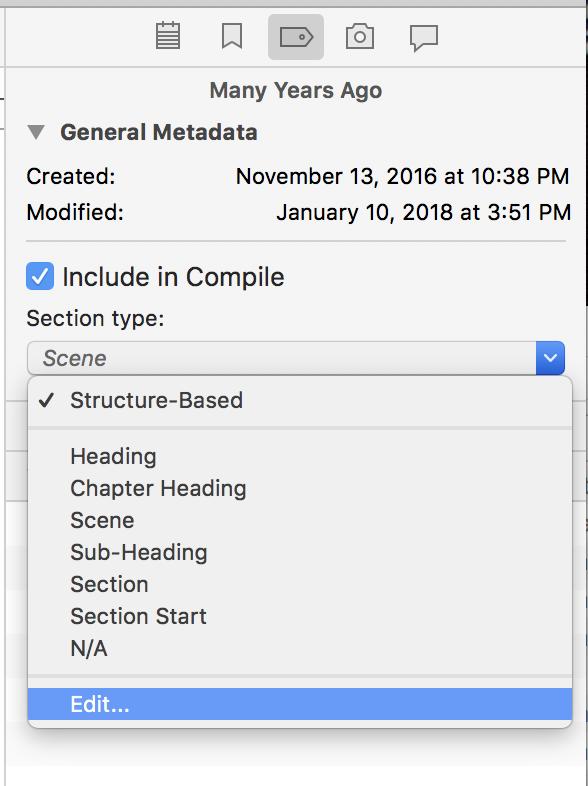
When compiling, Scrivener 3 applies preset formatting to different categories of folders and documents. It's worth your time to check that your manuscript has the right ones selected.
In any document, go to the Inspector, and click on the tag-shaped icon to bring up the Metadata pane. You'll see a pulldown menu for Section Type. Each project template includes appropriate section types.
The default, "Structure-Based," means Scrivener's taking its best guess about how to categorize this part of your project. You can manually change this by choosing an option below it.
To set a new category for entire groups of files in your documents — i.e., make every folder a Chapter — go to the Edit… option at the bottom of the menu. In the window that appears, choose the Default Types by Structure tab. Here, you can make sure that Scrivener will treat the folders and documents in your project the way you want.
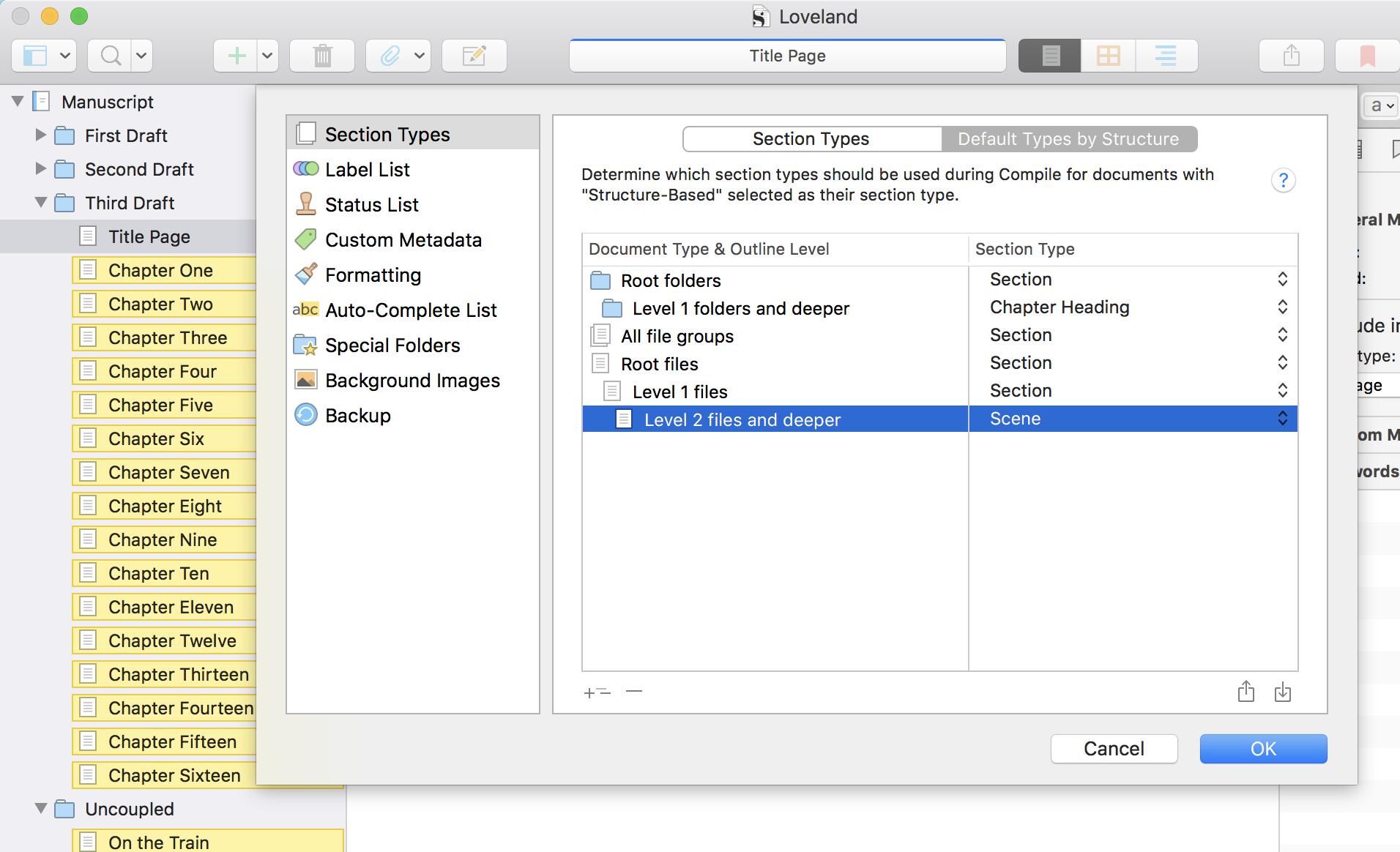
Select an item in the "Document Type & Outline Level" column. (Click the + button at the bottom of the list if you want to add a new sublevel below it.) Then use the pulldown in the "Section Type" column to assign it a category. Scrivener conveniently highlights all the files in your document that fall into that category.
Step 2: Tell Scrivener what you want to create
Once you've made sure your files have the right categories, open the Compile box via File > Compile, opt-cmd-E, or this button in the top button bar:
Master your iPhone in minutes
iMore offers spot-on advice and guidance from our team of experts, with decades of Apple device experience to lean on. Learn more with iMore!
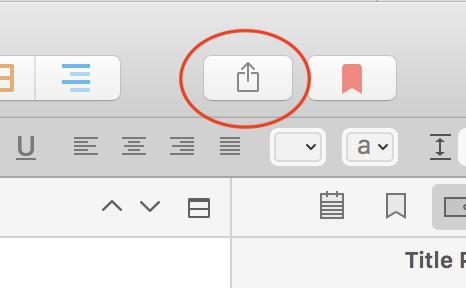
Start with the "Compile for:" pulldown at the very top:
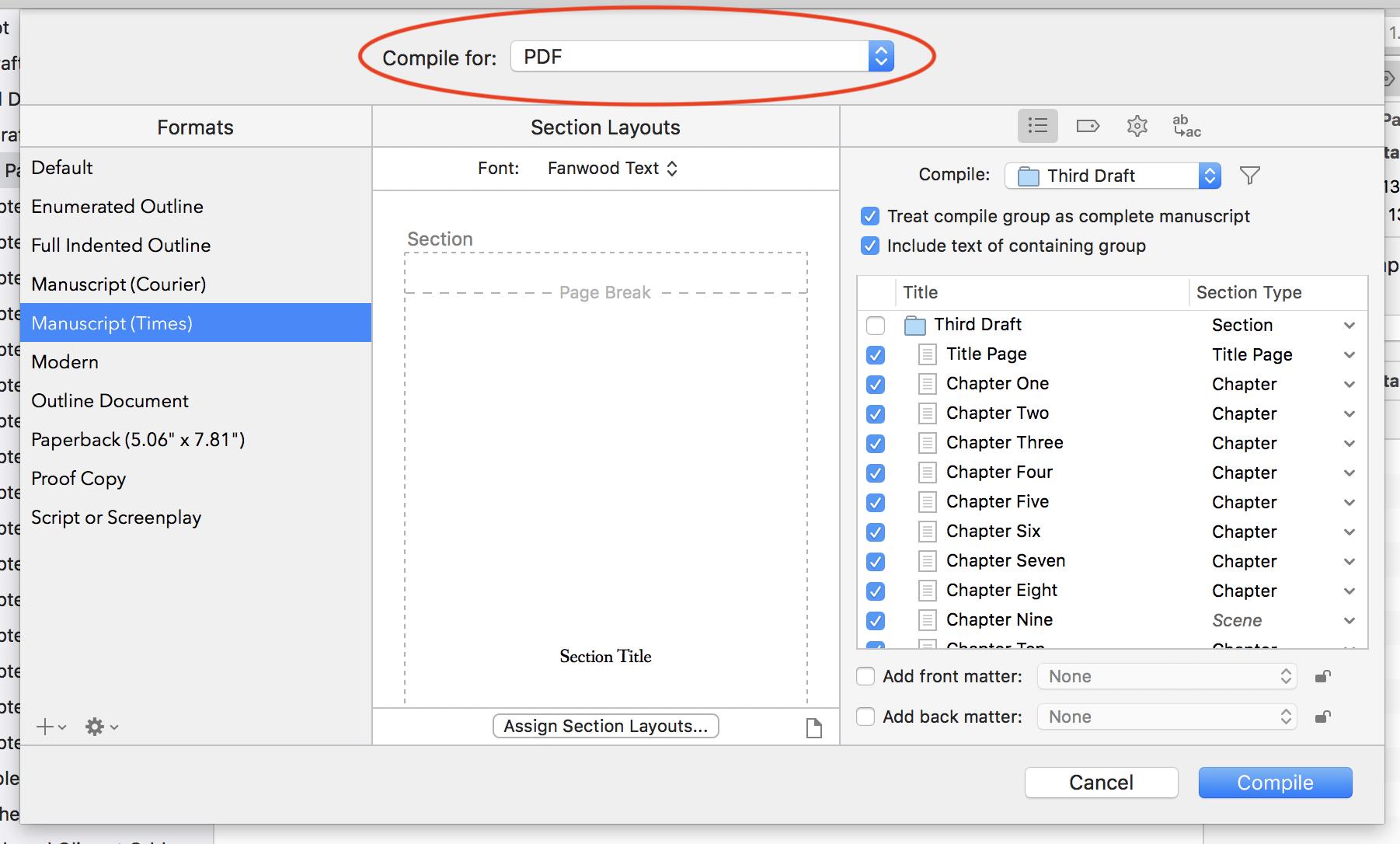
The options in the Formats column change, depending on what you choose here. Besides print, PDF, or various text and word processing files, you can export to Final Draft or Fountain for screenplays, or ePub or Kindle for ebooks. If you choose the latter, Scrivener will point you to Amazon's site for a free Kindlegen app to create authentic Kindle-ready files.
Step 3: Choose how it'll look and what should go in it
Each item in the Formats column comes with its own default set of Section Layouts in the middle column.
Want to create your own format? Click the plus button at the bottom of the format column, if you dare. (Keep the manual handy, because doing so gets complicated, fast.)
To pick a new font for your entire book, use the Font pulldown at the top of Section Layouts column. To see different options for how each part of the book will look, click the Assign Section Layouts button at the bottom. Here's where your work in Step 1 pays off.
In the resulting window, you'll see a list of Section Types on the left, and options for how each should look on the right.
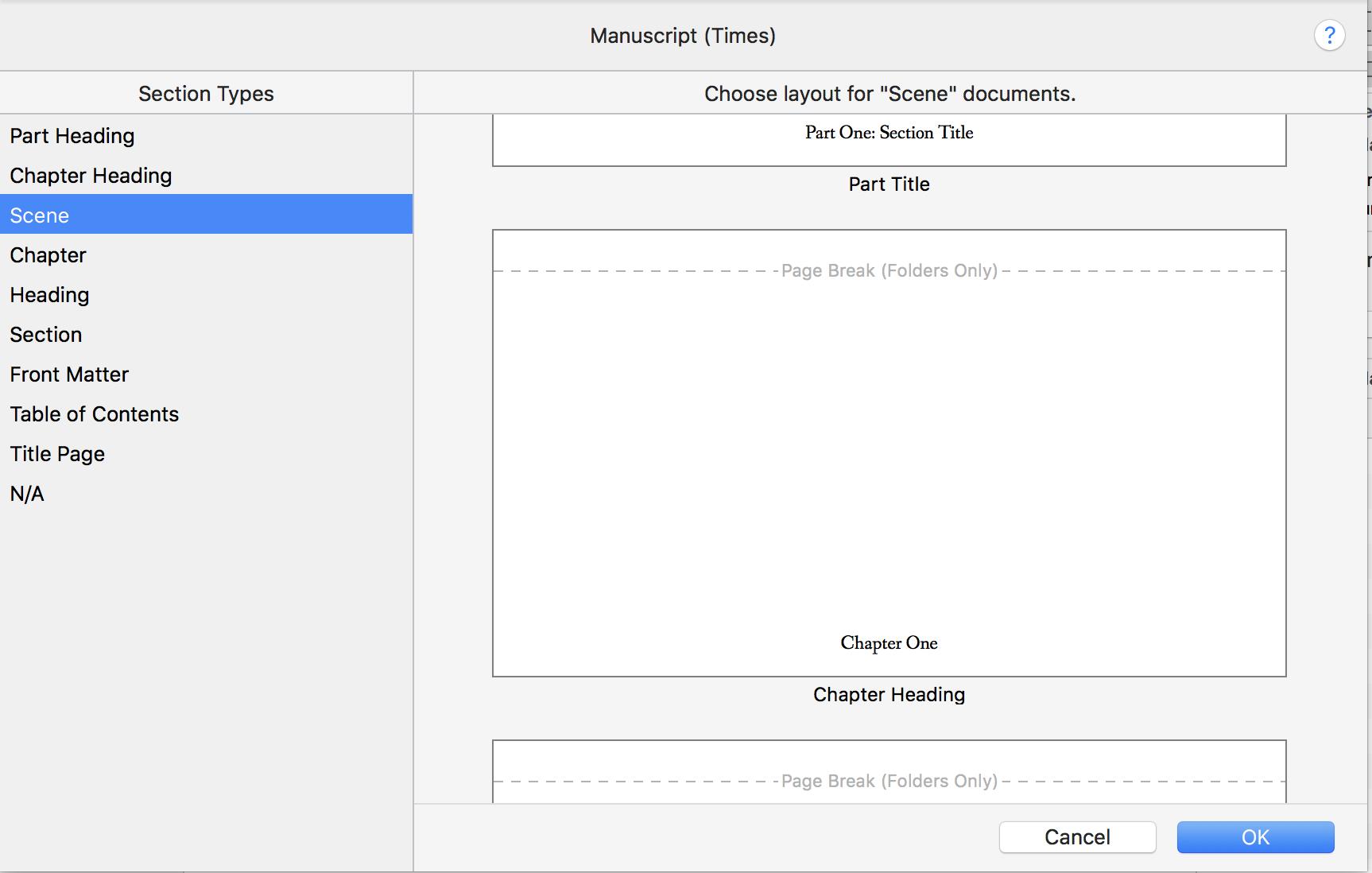
Play around with different options until you find the formatting you like best. At the bottom of every list, you'll find As-Is, in case you like your work exactly how you've already formatted it. Click OK when you're done.
The third, catchall column has four panes. First, under the list icon, choose which parts of your manuscript you want to compile.
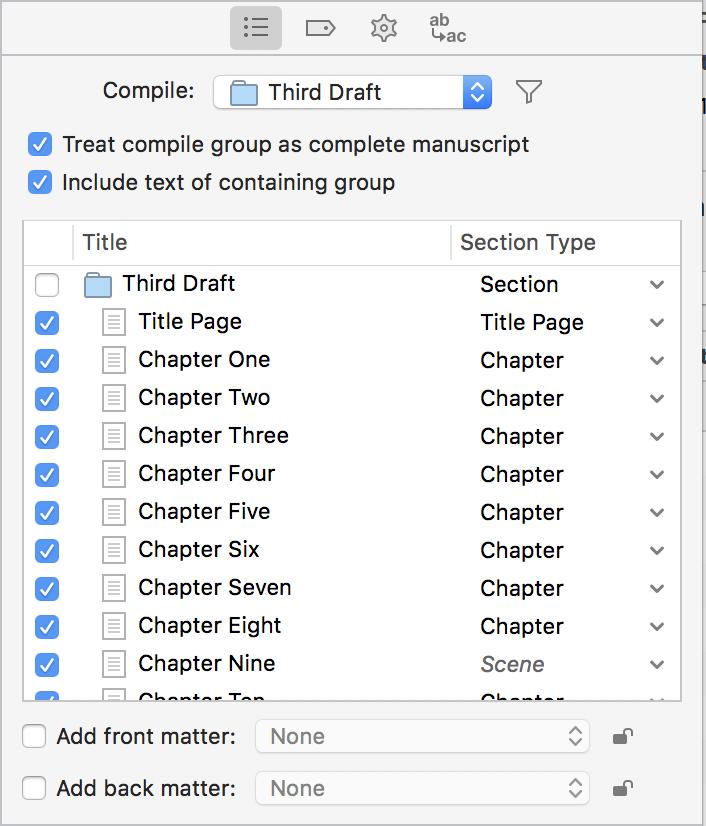
The "Compile:" pulldown menu lets you compile only what's in a specific folder — handy if, like me, you keep different drafts of a book in their own folders.
If you check "Treat compile group as complete manuscript," you'll have the option to add front and back matter from anywhere else in your project. (Nice, but not essential.)
Then scroll through the list of files, uncheck any you don't want to be included and make sure each selected file has the right section type.
The tag icon lets you specify a title, author name, subject, and keywords for your work. The options under the gear icon strip out pesky editing artifacts like footnotes, comments, or annotations. And the ab -> ac icon mass-replaces words and phrases for those last-minute character-name changes.
All set? Hit the Compile button. Scrivener works fairly quickly, so if your finished product doesn't look quite right, go back, tinker, and Compile again until it satisfies you.
Happy Scrivening!
Scrivener can do even more than the basics covered here, but with any luck, you've learned enough to start exploring on your own. Whatever you write, Scrivener can make the painstaking process of producing prose a little more fun.
Got questions we didn't cover? Favorite features we omitted? Let us know in the comments below.

Nathan Alderman is an iMore contributor. He’s been using Apple computers since his first Apple IIe in 1985, and writing professionally about Macs and their software since 2005. During his 12 years freelancing for Macworld, he covered email clients, web browsers, web design programs, writing apps, and games, and he’s continued to follow those interests at iMore since 2017. An editor and writing coach in his full-time career, he spends his dwindling spare time writing fiction for fun, volunteering for democracy, and contributing to podcasts on The Incomparable Network. Nathan adores his wife and wrangles his alarmingly large children in bucolic Crozet, VA.
